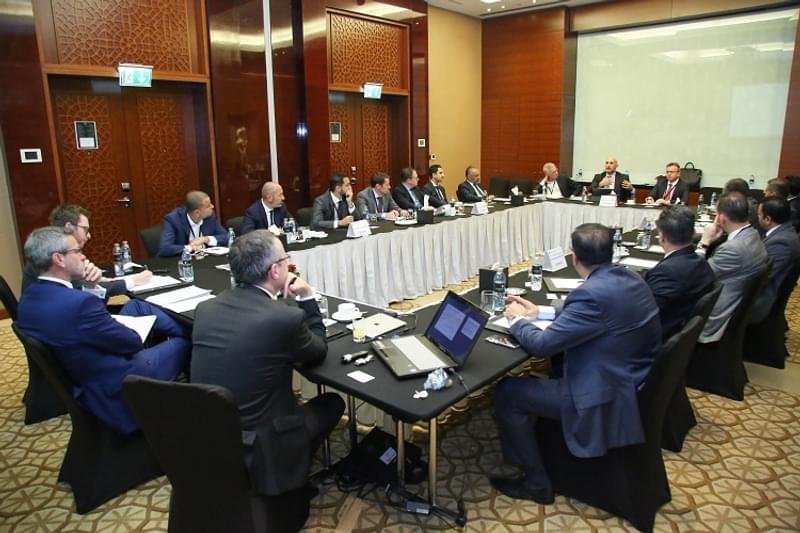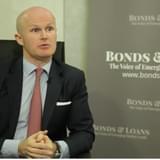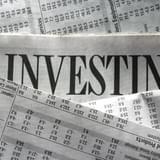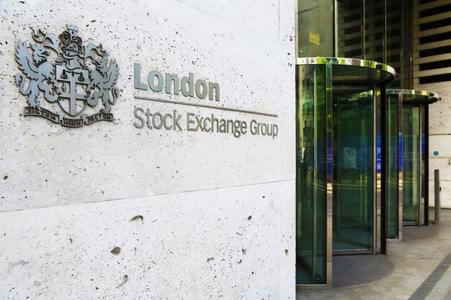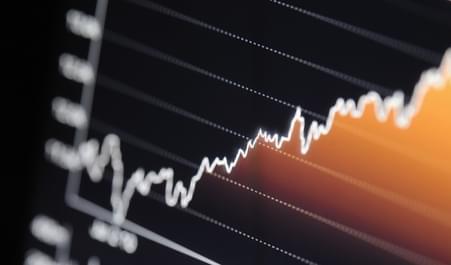ESG-linked funding has grown leaps and bounds over the past decade, with the most obvious example of that being found in the rapid expansion of the green bond segment. Over the past three years alone, issuance of green bonds – where the proceeds of a transaction are used to finance green initiatives and certified against a formal sustainability framework – have skyrocketed from just over USD90bn in 2016 to more than USD200bn during the first ten months of 2019, with volumes on track to reach over UDS213bn by year-end, according to Bonds & Loans forecasts.
The tremendous growth in ESG-linked funding isn’t just found in the debt capital markets. Green and sustainability-linked loans – where the use of proceeds are linked to the adherence to ESG-linked performance metrics – have also picked up pace in recent years, growing from virtually zero in 2015 to reach just over USD92bn during the first three quarters of 2019, according to data from Refinitiv.
In some ways, that rapid growth may be unsurprising. Investors and borrowers in different parts of the world – predominately, though not exclusively, Europe and the United States – are increasingly being pushed to demonstrate cognisance or prioritisation of sustainability across their operations or their allocation of capital in order to achieve a wide range of higher-level sustainability goals. The most prevalent expression of those ESG objectives are the UN’s Sustainable Development Goals, 17 interconnected objectives designed to address a series of issues including poverty, inequality, climate change, environmental degradation, peace, and justice.
Why is the Middle East Lagging?
Yet a deeper dive into those figures would, on the face of it, suggest that CFOs and treasurers in the GCC have lagged their emerging and developed market peers when it comes to embracing sustainability as a cornerstone of funding. The Netherlands, Germany and France combined accounted for about half of all ESG-linked bond issuance during the first three months of 2019. All told, borrowers in Europe and the US accounted for close to 80% of all issuance, with China – an unlikely leader and, in terms of regulation, a pioneering force in the green bond space - accounting for about 15% of deal volumes.
Deals out of the Middle East, by contrast, barely register in the data, with just three certified ESG-linked bond issuances and one sustainability-linked loan in three years: the National Bank of Abu Dhabi’s USD587mn 5-year green bond, issued in March 2017 before its merger and subsequent transformation into First Abu Dhabi Bank; Majid Al Futtaim’s two 10-year USD600mn sukuk, placed in April and October 2019; and DP World’s UDS2bn dual conventional and sharia-compliant 5-year green loan, which was structured such that the margin of the facility is linked to the company’s carbon emissions intensity.
There has been no shortage of noise around environmental sustainability, particularly in Dubai, where Bonds & Loans and MUFG, a leading global Japanese investment bank and sustainability frontrunner, recently hosted an exclusive roundtable discussion with top regional CFOs, treasurers and investors on the state and evolution of ESG-linked funding in the region.
Well before ratifying the Paris Climate Change Accord in 2016, the UAE authorities have taken a strong position on environmental sustainability, leading to the launch of a series of initiatives supporting energy efficiency and decarbonisation, with authorities committing billions of dollars to programmes like the Masdar initiative and others to help foster an environment for renewable energy, sustainable real estate infrastructure, water desalination, carbon capture and energy efficiency companies to thrive.
Among the most promising efforts is the desire and commitment of the Dubai government to take a lead and become a hub for green finance in the region. The Dubai Green Fund, established by the Dubai Electricity and Water Authority (DEWA), is keen to play a key role in financing green projects and provide concessionary loans for investors. It is aiming for about USD27.2bn in green assets under management.
However, some CFOs and treasurers said they are being held back by a “lack of buy-in” from senior management and confusion around what outcomes or objectives, under the wide umbrella of sustainability, to prioritise.
“As an institution we recognise that doing sustainability right means having everyone from the mail room to the board room aligned in the pursuit of these objectives. On the lending side, we have committed to the creation of more than UDS190bn in sustainability-linked assets by 2030, and to helping borrowers make the transition to more sustainable business practices – but it’s not just about financing. Often, what we’re hearing from clients and what we see as a large organisation first-hand is that the challenge is in all of the other little behavioural and process-related changes organisations need to make on that journey,” says Stephen Jennings, Head of Energy & Natural Resources, Structured Finance Office for EMEA, MUFG.
“What seems clear to me when speaking with our clients is that there is still a great deal of confusion around what to prioritise when it comes to sustainability,” added Mark Wells, Head of Structured Debt Capital Markets at MUFG. “It’s one of the reasons why we advise all our clients develop and familiarise themselves with articulating an ESG policy – it’s an important, and increasingly essential, story to tell.”
Having a sustainability framework or policy can provide a helpful blueprint in managing those behavioural shifts. For those firmly focused on funding benefits, it can also help overcome time-to-market with ESG-linked bond transactions, which has been flagged by some as a bottleneck in the past. One participant said dealmakers were quoting transaction timelines of between nine and twelve weeks for ESG-linked deals, which is well beyond the two to four-week period borrowers find on vanilla deals – a lag that has put some issuers off the entire endeavour.
“We were fortunate to get early buy-in from the Board and senior management very early on. Our chief sustainability officer having been with the company since 2011, so we have been actively focused on this for some time now. We spent a considerable amount of time and effort consolidating all of the things we were already doing in helping to achieve the sustainable development goals, on water and electricity usage for instance, and the development of sustainable real estate infrastructure, before then deciding to merge our funding strategy with our sustainability strategy,” explained Nikolaos Passaris, Head of Treasury Front Office at Majid Al Futtaim.
“Our view is that you can’t just do sustainability in a transactional sense – or just for a short-term pricing or marketing benefit. You need to embrace it as a long-term journey and fundamentally buy into the idea of sustainable capitalism. The good news is that once you do that, the funding part is relatively straightforward and does bring longer-terms benefits.”
The idea of issuers gaining a pricing benefit from green securities over vanilla instruments has been debated and discussed at length before, and while proving any price advantage is tricky given the complexity of primary pricing and the variability of the market environment, an analysis undertaken by the Climate Bonds Initiative of conventional and ESG-linked bonds in the European markets would suggest the latter often enjoy marginal performance gains and lower volatility, largely due to the relative scarcity of green assets and in some cases, the buy-and-hold nature of the investor base.
Some nevertheless anticipate a pricing benefit in prioritising ESG to inevitably result in the longer-term simply because investors and lenders may one day be prohibited from investing in or lending to organisations on the basis of their ESG performance, leading to a natural redistribution and repricing of liquidity.
“This is becoming a big issue, particularly in the context of investor diversification,” said Neeraj Agrawal, CFO of Crescent Petroleum, a company that invests in a broad range of hydrocarbon activities. “Having a clear sustainability and governance policy, an ESG story, was crucial for us when it came to engaging with investors– especially given the kinds of sectors and places where we are active.”
Governance, Social Factors Need to Take Centre Stage
While recognising the importance of environmental sustainability, many who participated with the discussion also highlighted that attention needs to be more balanced to include a deeper focus on social and governance aspects as well, particularly following some of the higher-profile governance-related challenges to have hit the region in recent years.
“We are under enormous pressure from our clients to integrate ESG into our investment methodology because it helps us make better investment decisions. But governance accounts for the biggest part of the ESG framework for us – around 40% of the ESG score in fact, compared with 35% social and 25% environment,” explained Mohieddine Kronfol, CIO of Global Sukuk and MENA fixed income at Franklin Templeton Investments in Dubai.
“Whether you are looking at countries like Lebanon more recently, or the downfall of companies like Abraaj, these governance and ESG shortcomings are very real risks, and how they impact people and communities – and how they impact investors – is becoming clear.”
Kronfol said the main challenge revolves around data availability, and encouraged CFOs and treasurers to invest in plugging the data gap in order to help avoid ‘greenwashing’ and prepare for a funding environment that will see capital allocators become far more selective in terms of who and what they are allowed to invest into.
“The cost of not prioritising ESG might be 25 basis points today, but ultimately we are going to reach a point where investors like us will end up making decisions to invest in some companies and not others on the basis of their ESG scores. That point is coming more quickly than many in this region realise, but we want to incentivise good behaviour, not punish bad behaviour.”
Beyond “Green”
That potential eventuality also underscores the need for ESG-linked funding proceeds to be directed beyond ‘green’, which accounts for more than 90% of the overall sustainable finance market.
“One of the challenges we have is that the market has been very focused on green. We have secured some quick wins because we finance so many initiatives that naturally are green. But it speaks to how nascent sustainable finance really is, and poses a significant risk of complacency given how rapidly the regulatory environment is evolving – the social and governance factors are very important and we expect a greater proportion of the sustainable finance pipeline to be linked with these aspects in the years to come,” Jennings added.
A nascent but growing subset of the sustainable finance arsenal may help address some of the challenges Kronfol and Jennings allude to. The majority of ESG-linked funding transactions are ‘proceeds-based’ in the sense that their ESG label largely centres on the way in which proceeds are invested, but the growth of transition bonds and loans – where incremental improvements in ESG-related key performance metrics are rewarded with interest rate margin discounts (in the same way DP World’s sustainability-linked loan links the interest rate paid by the borrower with the company’s carbon emissions intensity) – provide a glimpse into how financial instruments can help shift behaviours on nearly all of the UN sustainable development goals, incentivise data collection, and capture a wider range of use cases and borrowers.
We’ve seen this primarily on the loans side of the market, but we are starting to see it in bond markets too – most recently with Italian energy firm Enel. The firm placed a USD1.5bln single tranche issue which was then followed by a EUR2.5bn issuance across three separate tranches. The USD1.5bln and the two shorter tranches of the EUR2.5bn issuance were linked to the company’s ambition of having at least 55% of their installed capacity in renewable energy sources by 2021. If the 55% goal is not reached by 31 December 2021, the coupon will be increased by 25bp until the bond matures. The 15-year tranche of the EUR2.5bn issuance was linked to cutting the company’s greenhouse gas emissions by 70% by 2030 when compared to the 2017 level.
“While this was a one-time step up linked to a very specific sustainable development objective, there is no reason to believe we wouldn’t see a similar mechanism applied continuously throughout the lifetime of the instrument, and across a wider range of SDGs,” Wells added.
Could Oil & Gas Companies Lead the Sustainability Revolution in the Middle East?
The dominance of the oil & gas sector has often been held up as one of the primary inhibitors to the rise of sustainable finance in the Middle East – perhaps unfairly. Indeed, the region’s heavy reliance on extractive sectors and natural resources like hydrocarbons may pose a potential quagmire on the face of it, with some concerned there is a risk local stakeholders may resign themselves to giving up improving sustainability before even trying, simply by virtue of the ‘brown’ nature of the region’s industrial base and its reputation.
“What’s important for us isn’t the starting point; it’s the journey. It would be a mistake to think that just because a company focuses on waste water treatment or solar energy production that they naturally score higher on ESG. In the same way, it’s unfair to assume that just because a country or company depends heavily on or develops hydrocarbons, the score low on ESG,” Kronfol said. “That the same notion applies to the relationship between shariah-compliant assets and ESG-linked assets; sukuk are often considered strong on ESG, but that isn’t always the case.”
Others, however, argued that because so many oil and gas firms in the Middle East are either fully or partially state-owned, and because they account for such a substantial share of economic output, that they are uniquely placed to lead the transition towards more sustainable practices.
“As a state-owned entity in Oman, we are the flagship in a sense… we should be leading in this area – that’s why ESG is very important to us, even more so because of the sector we are in,” explained Alex Clar, Group Treasurer at Oman Refineries and Petroleum Industries Company (ORPIC). “Branding and reputation, our treatment of the environment, and our treatment of people and employees represent nearly half of our own internal ‘scorecard’. Governance and risk management is becoming a bigger focus for us.”
Nicolas Thevenot, Managing Director of Corporate Banking at Arab Petroleum Investment Corp (APICORP), a multilateral development bank established in 1975 by the ten Member States of the Organization of Arab Petroleum Exporting Countries, echoed that point, highlighting the need to assist its member states in implementing frameworks that help them balance protecting existing investments, while transitioning towards investing in more sustainable projects like renewable energy, energy efficiency, and wastewater treatment, improving community cohesion, and strengthening governance.
“We need to move in this direction of greater sustainability very quickly, but we also need to be conscious of the fact that for the sake of social cohesion, economic and energy security, this can’t really happen overnight. So, the crucial question for us is: how do we find the right balance between the two? This is one of the most important questions we in this region face today,” Thevenot said.
“We want to see improvement – we want to see a positive trajectory. It isn’t realistic to expect perfection out of the starting gate,” Kronfol concluded.
